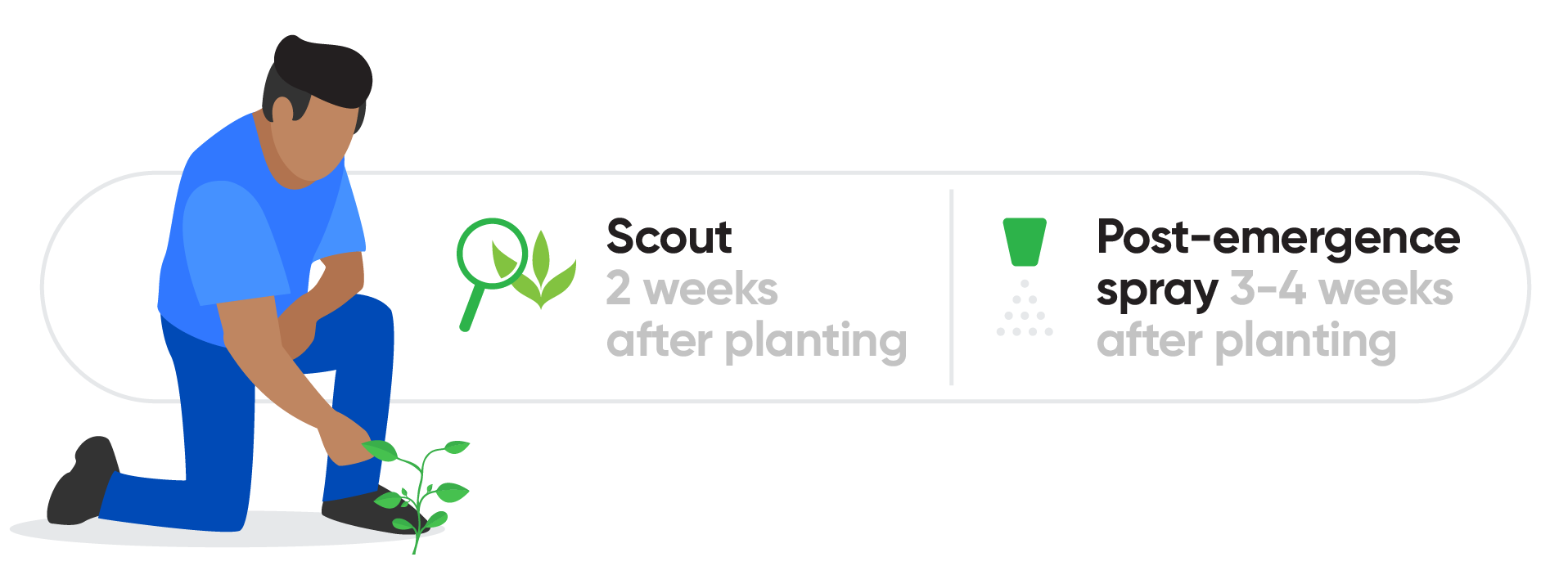Mastering weed management in IP soybeans
While high price premiums make identity-preserved (IP) soybeans an attractive crop option for many, the weed management needs of IP soybeans may give some farmers pause. It shouldn’t.
While high price premiums make identity-preserved (IP) soybeans an attractive crop option for many, the weed management needs of IP soybeans may give some farmers pause. It shouldn’t.
With a solid plan and the right products, you can maximize your yield and return on investment.

Controlling weeds in IP soybeans relies on the same key principles as in an herbicide-tolerant (HT) crop:

The main difference is that in HT (Herbicide Tolerant) soybeans, the in-crop herbicides (glyphosate, 2,4-D choline or glufosinate) are available to effectively manage weed escapes, while in IP soybeans, the options for post-emergence weed control are limited. Therefore, a pre-plant/pre-emerge herbicide is the bedrock of an effective weed management plan for IP soybeans
The critical weed-free period in soybeans is from the first to the third trifoliate. Research out of the University of Guelph’s Ridgetown Campus shows that if a soil-applied herbicide is able to keep fields clean through this window, that one herbicide pass may be all you need to protect yield and those market premiums (see Table 1)1. That’s how important effective early weed control is in IP soybeans.

Rain, however, doesn’t always come at the right time for soil-applied herbicides to activate, or conditions could be ripe for a late flush of weeds. In these cases, a post-emergent herbicide could be beneficial. That’s why it’s important to scout for weed identification and stage.
Start scouting IP soybeans about two weeks after planting and then every few days after that – you need to keep on top of changing field conditions and be ready to act fast. The weed species you find and how big they are should determine the herbicide or herbicide mix you choose. Make sure to check your herbicide label before spraying.
The ideal time to spray weeds post-emergence is about three to four weeks after planting. Any later than that could result in less-than-ideal control as the weeds will be too big.

This can be harder than it sounds, particularly if you’re looking at a wide array of weeds that may include herbicide tolerant biotypes, so talk to your local Retailer or Territory Manager if you need guidance. The important thing is to build a herbicide program specifically around what’s in the field because, unlike HT soybeans, you can’t rely on non-selective herbicides to clean everything up.
Soil-applied Commenza™ herbicide lays the pre-plant/pre-emerge foundation of effective weed management in IP soybeans. With three modes of action (Groups 2, 5 and 15), Commenza controls or supresses over 30 weeds, including some resistant biotypes and key weeds like Canada fleabane, horsetail and nightshade, to keep fields clean through the critical weed-free period.
1https://www.country-guide.ca/crops/pest-patrol-best-practices-for-weed-control-in-identity-preserved-ip-soybean-part-1/